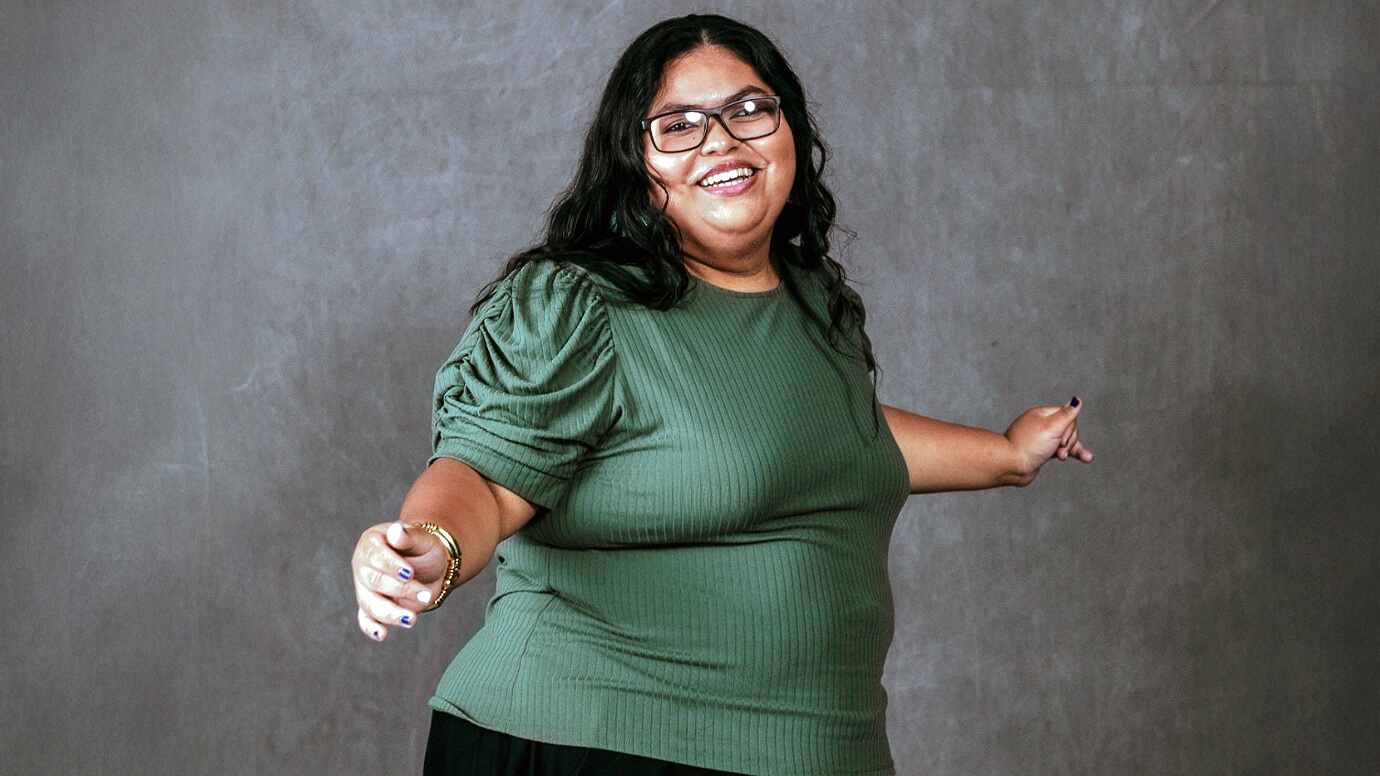Go Beyond the Misconceptions of Diabetes
Written by: Beyond Type 1 Editorial Team
8 minute read
October 15, 2025
Misconceptions about diabetes are everywhere. And it makes sense!
Just a few decades ago, researchers thought type 1 diabetes (T1D, an autoimmune disease that used to be called juvenile diabetes) was primarily diagnosed in children. But at least half of cases are diagnosed in adulthood.
We also used to think that the metabolic disease type 2 diabetes (T2D) was primarily due to lifestyle factors like diet and exercise. But type 2 diabetes is caused by a complex mix of genetic and environmental reasons.
It’s time to flip those misconceptions and rewrite the diabetes story, together.
And it’s more important than you think—when diabetes is brushed off as not a big deal, people living with the disease can experience poor health outcomes like heart disease, kidney and liver damage, blindness, limb amputation and even death.
Did you know?
- In the U.S., 1 in 3 people have prediabetes, but 9 in 10 of them have no idea.
- Prediabetes can be reversed but if the condition progresses to T2D, only 5% of cases ever go into remission—where no symptoms of T2D are present and medication is no longer needed to control blood sugar levels.
- Around the world, 1 in 3 people with type 1 diabetes have died due to missed diagnosis or not enough healthcare.
- When type 1 diabetes develops in adulthood, it gets misdiagnosed and mistreated as type 2 diabetes in up to 40% of cases.
All of this is a reminder of why Beyond Type 1 invests in breaking down barriers to education, care and support.
Let’s flip the script so people get the real story and the care they deserve.
There are SO many different kinds of diabetes.
Most people think they know about one or two kinds of diabetes—”the kind that grandparents get and the kind that kids get.” 🙃 The reality—diabetes can be diagnosed in anyone, of every body size, every race, every age and every background.
There are also far more than two types of diabetes, with new types being better understood all the time.
Latent Autoimmune Diabetes in Adults (LADA), often referred to as type 1.5 diabetes, is a version of type 1 diabetes that is diagnosed in adulthood and develops more slowly than classic T1D. Because of misconceptions and stigmas, it is often first misdiagnosed and treated as type 2 diabetes, which can lead to health problems.
Recently, researchers have begun digging into type 5 diabetes, caused by severe malnutrition. There are also versions of type 1 diabetes that don’t have the disease’s typical autoimmune markers (known as idiopathic type 1 diabetes), as well as versions of type 2 diabetes that seem to have an autoimmune component.
The more we learn about diabetes, the more we realize how little we know about diabetes—yet another reason outdated stigmas must be smashed and every person’s lived experience seen, validated and shared.
Diabetes is NOT your fault.
We still don’t know exactly what causes any type of diabetes to develop, but we do know two key things contribute—genetics and environment.
In type 1 diabetes, an autoimmune disease, a complex mix of genetic mutations combined with an environmental trigger causes it to develop. Changes to diet or exercise will never prevent it and there is currently no cure for T1D.
Type 2 diabetes, a metabolic disease, has a stronger link to genetics and family history than type 1 diabetes. Factors like body fat composition—both related and entirely unrelated to lifestyle factors—and older age can increase risk of type 2 diabetes, in addition to factors like smoking and lack of physical activity. But someone who pays close attention to diet and exercise can still develop T2D due to genetic factors.
People with diabetes CAN have sugar.
Sugar fuels everybody. Most of the food we eat breaks down into glucose, moves into the blood stream and, with insulin (a hormone produced in the pancreas), moves into our cells for energy.
For a person living with diabetes, the body either doesn’t make enough insulin or the person’s cells resist its effects. Whether our body makes its own insulin or not, we all need sugar for fuel.
That means people with diabetes’ food choices end up being the same as anyone’s—aim to get enough nutrition, fuel your body and enjoy that cookie as part of a complete diet.
And when a person with diabetes is experiencing low blood sugar, consuming sugar in the form of candy, juice and other sweets literally saves our lives.
People with diabetes CAN have healthy pregnancies.
Being pregnant while living with diabetes is considered high risk and requires planning. It takes a lot of work and attention to keep blood sugar levels in a healthy range.
But when people with diabetes have access to good healthcare, affordable medications, diabetes technologies like continuous glucose monitors (CGMs), affordable and nutritious food, and safe areas to walk and exercise, the chances of a healthy outcome for mother and baby are extremely high.
So yes, people living with diabetes can and do have healthy pregnancies. In fact, they account for about 9% of all pregnancies!
People with diabetes CAN play sports.
Improved medications, treatment options and technologies mean that people with diabetes can participate in pretty much anything we want to.
Before these more modern treatment options, people with diabetes did often need to keep very strict and predictable schedules of eating times, medication dosages and activity levels.
Even still—being active has always been an important tool in a person with diabetes’ toolkit.
These days, professional athletes prove that you can reach the highest levels of sport while living with and managing diabetes. Just check out:
- Football players AD Mitchell and Mark Andrews
- Basketball players Lauren Cox and Gary Forbes
- Baseball players Adam Duvall and Garrett Mitchell
- Soccer players Nacho Fernandez and Jordan Morris
- Dancer Riley Arnold
- Golfers Michelle McGann and JJ Spaun
- Olympic gymnast Charlotte Drury
- Hockey player Max Domi
These elite athletes prove that when we have access to the tools to be well, diabetes doesn’t have to define what’s possible.
The bottom line—diabetes is complex, access to good healthcare is a requirement, life-changing and life-saving medications must be available at accessible price points, and we’re learning new things about diabetes every single day.
As science evolves, so must the systems that support people with diabetes to ensure people don’t just manage diabetes, they thrive—beyond their diagnosis, beyond their barriers and beyond expectations.
At Beyond Type 1, changing what it means to live with diabetes starts with changing the story. Ready to help us?
- Help us smash the stigmas of diabetes by sharing Beyond the Misconceptions.
- Share your story of how misconceptions have impacted your life with diabetes online.
- Learn more about Beyond Type 1 programs and get involved.
- Donate to invest in a better life for people living with diabetes.
Related Resources

The idea of switching diabetes devices can feel intimidating, let alone actually wearing one. This...
Read more

When you live with any type of diabetes, complications can happen over time—even when blood...
Read more

2026 is right around the corner. That means it’s time to start thinking about insurance...
Read more


